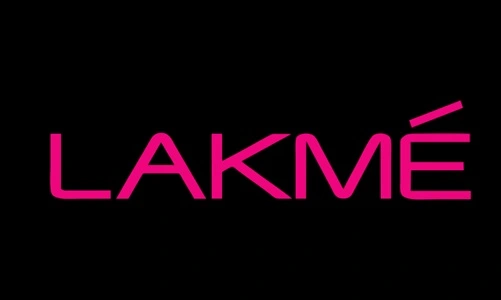Lakmé, a subsidiary of Hindustan Unilever Limited (HUL), is one of India’s most iconic and well-established beauty brands. Founded in 1952, Lakmé was India’s first domestic beauty brand, introduced to reduce India’s dependence on imported beauty products. Today, Lakmé has grown into a market leader in cosmetics and skincare, known for its high-quality and affordable products. With a strong product portfolio spanning across skincare, makeup, and professional services, Lakmé has built a loyal customer base and solid brand equity. However, as the Indian beauty industry rapidly evolves with new trends, consumer preferences, and global competition, Lakmé faces both opportunities and challenges. This SWOT (Strengths, Weaknesses, Opportunities, Threats) analysis provides insights into Lakmé’s current position and future outlook.

Strengths
1. Strong Brand Equity and Market Leadership:
Lakmé is one of the most recognized and trusted beauty brands in India, enjoying strong brand equity built over several decades. Known for quality, affordability, and accessibility, Lakmé has established itself as a household name with a loyal customer base across India’s urban and rural regions. This brand recognition gives Lakmé a competitive edge over newer brands, allowing it to remain a market leader in India’s beauty industry.
2. Diverse Product Portfolio Catering to Various Segments:
Lakmé offers a wide range of products across multiple categories, including skincare, makeup, and salon services. From foundations and lipsticks to skincare products and sunscreens, Lakmé’s diverse portfolio caters to various consumer needs and demographics. This broad product range allows Lakmé to serve different market segments, including budget-conscious consumers, young millennials, and professional makeup artists.
3. Extensive Distribution Network and Omnichannel Presence:
With a strong distribution network across India, Lakmé products are readily available in traditional retail stores, modern trade outlets, and e-commerce platforms. Lakmé’s physical presence in nearly all corners of India enables it to capture demand in both urban and rural areas. Additionally, the brand’s omnichannel strategy, which includes its own Lakmé Salons, enhances its market presence and customer reach, providing customers with an integrated brand experience.
4. Continuous Product Innovation and Trend-Setting:
Lakmé has consistently innovated to meet changing consumer preferences and set beauty trends in India. The brand frequently introduces new products that align with global beauty trends, such as matte lipsticks, long-lasting foundations, and skin-brightening creams. Its “Lakmé Absolute” and “Lakmé 9 to 5” ranges have been particularly popular, offering high-performance products that cater to modern women with active lifestyles. This focus on trendsetting and innovation has helped Lakmé stay relevant among young consumers.
Weaknesses
1. Limited Presence in Premium and Organic Segments:
While Lakmé has a strong foothold in the mass-market and mid-range segments, it has limited presence in the premium and organic beauty segments. With an increasing number of consumers seeking high-end, organic, and natural products, Lakmé’s limited offerings in these categories could restrict its growth. Brands like Forest Essentials, Kama Ayurveda, and international players like The Body Shop have captured the premium segment, making it challenging for Lakmé to penetrate this space effectively.
2. Dependence on Indian Market:
Lakmé’s primary focus remains on the Indian market, with limited presence in international markets. While this has enabled the brand to build a strong local presence, it also makes it vulnerable to changes in the Indian economy and shifts in domestic consumer preferences. Expanding its international footprint could provide Lakmé with additional revenue streams and reduce dependence on a single market.
3. Perception as a Mass-Market Brand:
Despite its popularity, Lakmé is often perceived as a mass-market brand, which may limit its appeal among high-income and premium customers who prefer luxury or niche brands. While Lakmé has attempted to enter the premium category with its “Absolute” line, overcoming its image as a budget brand remains a challenge. Repositioning itself as a premium brand without alienating its core customer base is a delicate balancing act for Lakmé.
4. Inconsistent Product Quality Across Lines:
Although Lakmé is generally known for its quality, there have been occasional concerns regarding the consistency of quality across different product lines. Some consumers perceive the quality of Lakmé’s lower-end products as inconsistent, which can impact brand trust. Maintaining consistent product quality across price ranges and segments is essential for Lakmé to uphold its reputation in a competitive market.
Opportunities
1. Rising Demand for Organic and Natural Beauty Products:
With increasing consumer awareness about the harmful effects of chemicals in beauty products, there is a growing demand for organic, natural, and chemical-free skincare and cosmetics. Lakmé has the opportunity to expand into this high-growth segment by introducing eco-friendly and natural product lines. Developing an organic line could attract health-conscious consumers and help Lakmé compete with brands like Biotique, Forest Essentials, and Khadi Naturals.
2. Expansion of Digital and E-commerce Channels:
The rise of e-commerce and digital shopping platforms presents a significant growth opportunity for Lakmé. With more consumers shopping online, Lakmé can further strengthen its presence on e-commerce platforms such as Amazon, Nykaa, and Flipkart, while enhancing its direct-to-consumer (DTC) channels. By investing in digital marketing, influencer partnerships, and data-driven personalization, Lakmé can reach tech-savvy millennials and Gen Z consumers more effectively.
3. Growing Professional Services and Salon Network:
The demand for professional beauty services and salons is increasing in India, driven by urbanization, rising incomes, and a focus on grooming. Lakmé’s existing salon chain, Lakmé Salon, has significant potential for expansion in Tier 2 and Tier 3 cities, where organized salon services are still emerging. By expanding its salon network, Lakmé can strengthen its brand presence, build customer loyalty, and provide a full-service beauty experience, positioning itself as a holistic beauty brand.
4. Collaborations and Partnerships for Product Innovation:
Collaborations with international brands, beauty influencers, and local artisans can help Lakmé introduce unique and innovative products. Such partnerships could allow Lakmé to leverage external expertise and bring global trends to the Indian market. Collaborations with sustainable brands or social influencers could also enhance Lakmé’s image among younger, environmentally conscious consumers, creating a stronger emotional connection with its target audience.
Threats
1. Intense Competition from Domestic and International Brands:
The Indian beauty industry is highly competitive, with numerous domestic and international players competing for market share. Global brands like L’Oréal, Maybelline, MAC, and Revlon, as well as popular local brands like Sugar Cosmetics, Colorbar, and Mamaearth, offer alternatives that appeal to Indian consumers. The rapid rise of digital-first brands and niche players offering organic, vegan, and cruelty-free products adds further pressure on Lakmé to innovate and maintain its market share.
2. Changing Consumer Preferences and Trend Sensitivity:
Consumer preferences in the beauty industry are highly dynamic, influenced by social media trends, influencer marketing, and evolving fashion. Any failure to keep up with emerging trends, such as clean beauty, cruelty-free products, or personalized beauty solutions, could impact Lakmé’s relevance. Additionally, as beauty trends shift rapidly, maintaining an agile product development and marketing strategy is essential to staying competitive.
3. Regulatory and Environmental Challenges:
The beauty and cosmetics industry faces strict regulations concerning product safety, quality standards, and ingredient labeling. Increasing regulatory scrutiny around harmful chemicals, such as parabens and sulfates, may require Lakmé to reformulate certain products. Furthermore, environmental concerns around plastic packaging and waste management are growing, with consumers increasingly favoring brands that prioritize sustainability. Lakmé must adapt to these regulations and consumer demands to maintain a positive brand image.
4. Rising Raw Material Costs and Supply Chain Disruptions:
The cost of raw materials, packaging, and transportation can be volatile, impacting Lakmé’s production costs and profit margins. Global supply chain disruptions, as seen during the COVID-19 pandemic, have highlighted the vulnerability of the beauty industry to such challenges. Managing these costs effectively and ensuring a resilient supply chain will be essential for Lakmé to maintain pricing competitiveness and product availability.
Future Outlook
Lakmé’s future outlook is promising, supported by growth opportunities in e-commerce, professional services, and premium beauty segments. With India’s beauty and personal care market projected to grow significantly, driven by rising disposable incomes, urbanization, and beauty awareness, Lakmé is well-positioned to capture demand. The brand’s strong legacy, extensive distribution network, and product innovation provide a solid foundation for sustained growth.
To capitalize on emerging trends, Lakmé must expand its portfolio in organic and natural beauty products. The demand for chemical-free, eco-friendly cosmetics is on the rise, particularly among millennials and Gen Z consumers. By developing a line of organic and sustainable products, Lakmé can attract health-conscious customers and align with global clean beauty trends. Additionally, focusing on eco-friendly packaging and adopting sustainable sourcing practices will strengthen its appeal among environmentally aware consumers.
Lakmé’s expansion into digital channels and e-commerce will play a crucial role in capturing India’s tech-savvy consumer base. By investing in personalized marketing, influencer collaborations, and virtual try-on technology, Lakmé can enhance customer engagement and improve online sales. Strengthening its direct-to-consumer (DTC) channels and expanding its presence on popular e-commerce platforms will be vital in reaching urban and semi-urban customers more effectively.
Expanding Lakmé Salons in Tier 2 and Tier 3 cities presents a valuable growth avenue, where organized beauty services are increasingly in demand. By offering a full-service experience through salons, Lakmé can build stronger customer relationships, increase brand loyalty, and further position itself as a comprehensive beauty brand.
However, to maintain its leadership, Lakmé must navigate challenges posed by intense competition, changing consumer preferences, and regulatory pressures. Enhancing product quality, ensuring consistent innovation, and managing costs effectively are essential to staying competitive. Addressing these challenges while embracing growth opportunities will allow Lakmé to maintain its position as India’s leading beauty brand.
In conclusion, Lakmé’s strengths in brand equity, product diversity, and extensive market presence position it well to capture growth in India’s beauty industry. With a strategic focus on sustainability, digital transformation, and customer-centric solutions, Lakmé is well-prepared to navigate challenges and shape the future of beauty in India.

